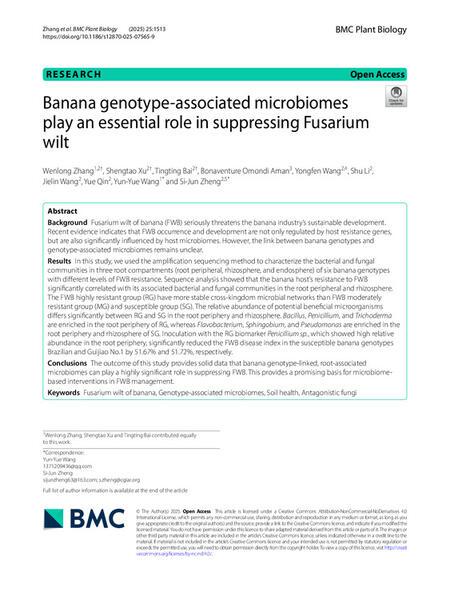
Introduction:
Fusarium wilt of banana (FWB) seriously threatens the banana industry’s sustainable development. Recent evidence indicates that FWB occurrence and development are not only regulated by host resistance genes, but are also significantly influenced by host microbiomes. However, the link between banana genotypes and genotype-associated microbiomes remains unclear.
Results:
In this study, we used the amplification sequencing method to characterize the bacterial and fungal communities in three root compartments (root peripheral, rhizosphere, and endosphere) of six banana genotypes with different levels of FWB resistance. Sequence analysis showed that the banana host’s resistance to FWB significantly correlated with its associated bacterial and fungal communities in the root peripheral and rhizosphere. The FWB highly resistant group (RG) have more stable cross-kingdom microbial networks than FWB moderately resistant group (MG) and susceptible group (SG). The relative abundance of potential beneficial microorganisms differs significantly between RG and SG in the root periphery and rhizosphere. Bacillus, Penicillium, and Trichoderma are enriched in the root periphery of RG, whereas Flavobacterium, Sphingobium, and Pseudomonas are enriched in the root periphery and rhizosphere of SG. Inoculation with the RG biomarker Penicillium sp., which showed high relative abundance in the root periphery, significantly reduced the FWB disease index in the susceptible banana genotypes Brazilian and Guijiao No.1 by 51.67% and 51.72%, respectively.
Conclusions:
The outcome of this study provides solid data that banana genotype-linked, root-associated microbiomes can play a highly significant role in suppressing FWB. This provides a promising basis for microbiome-based interventions in FWB management.

